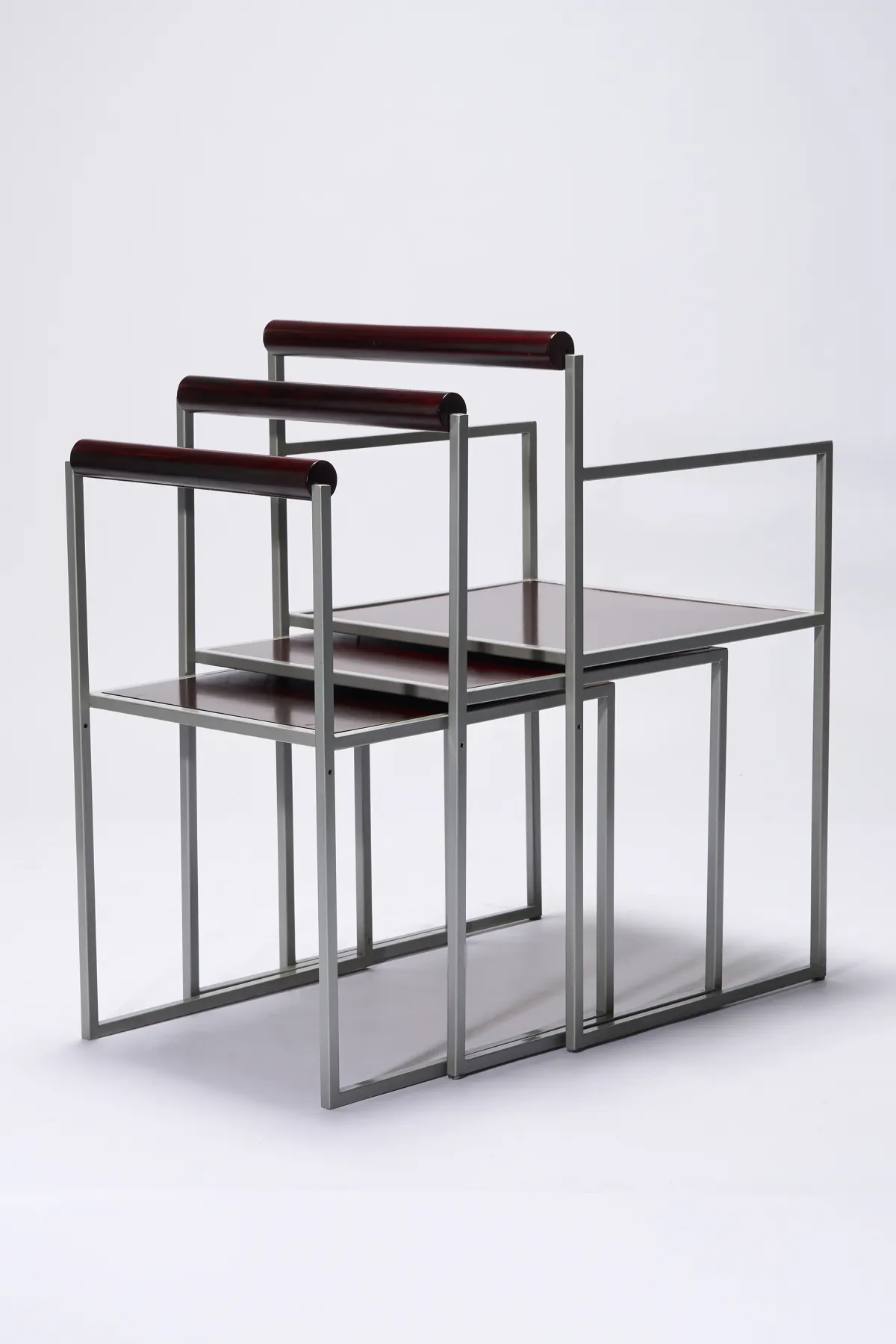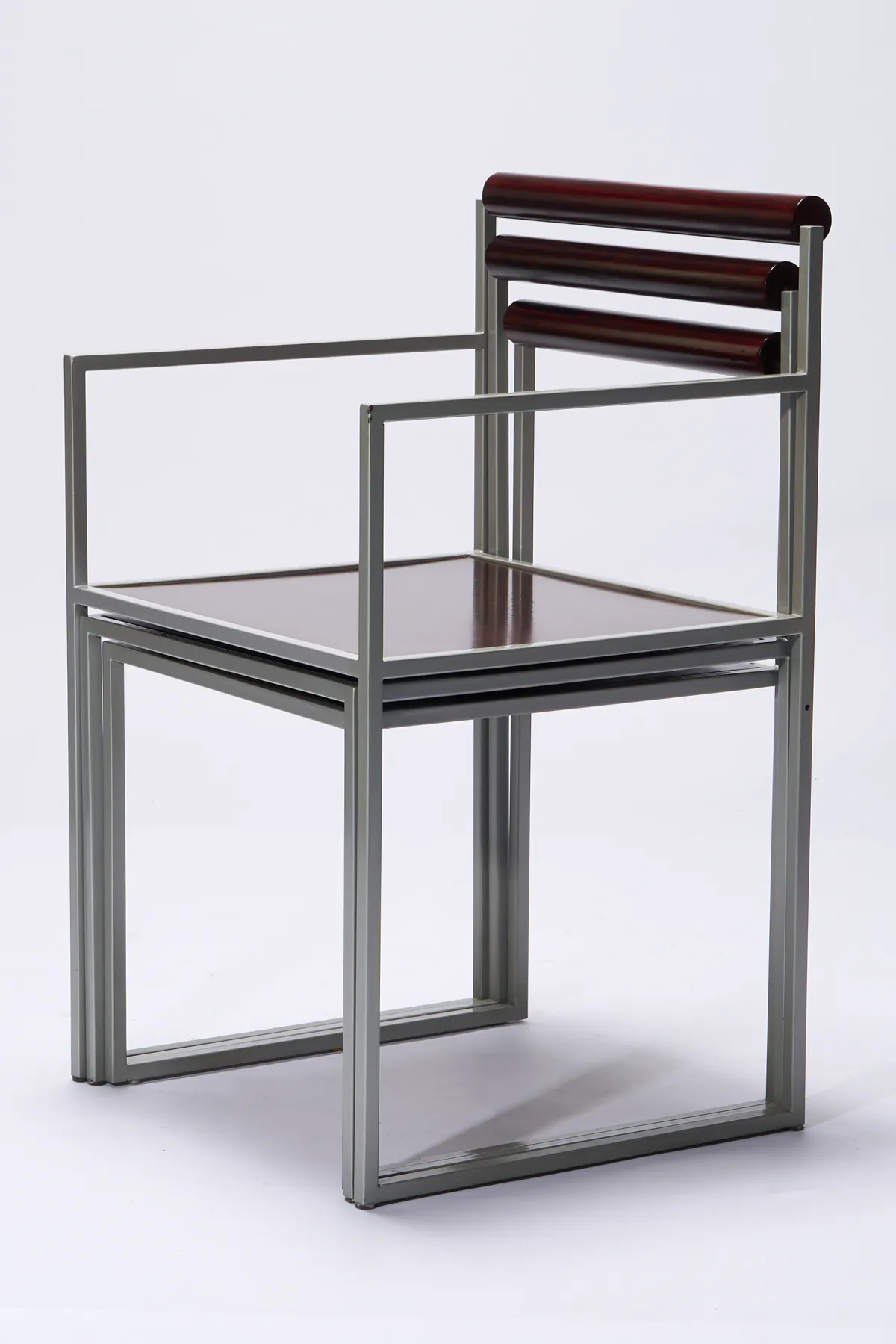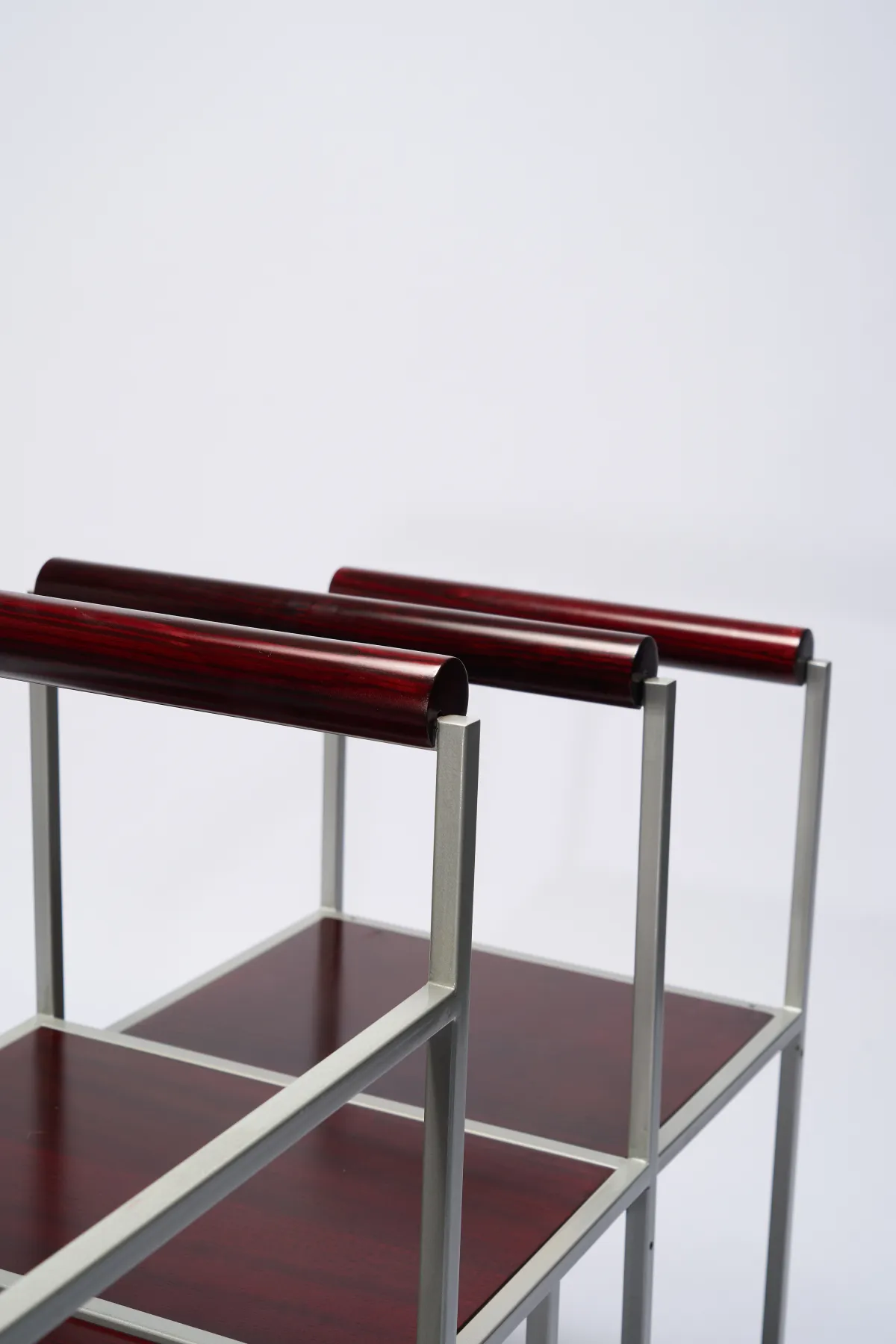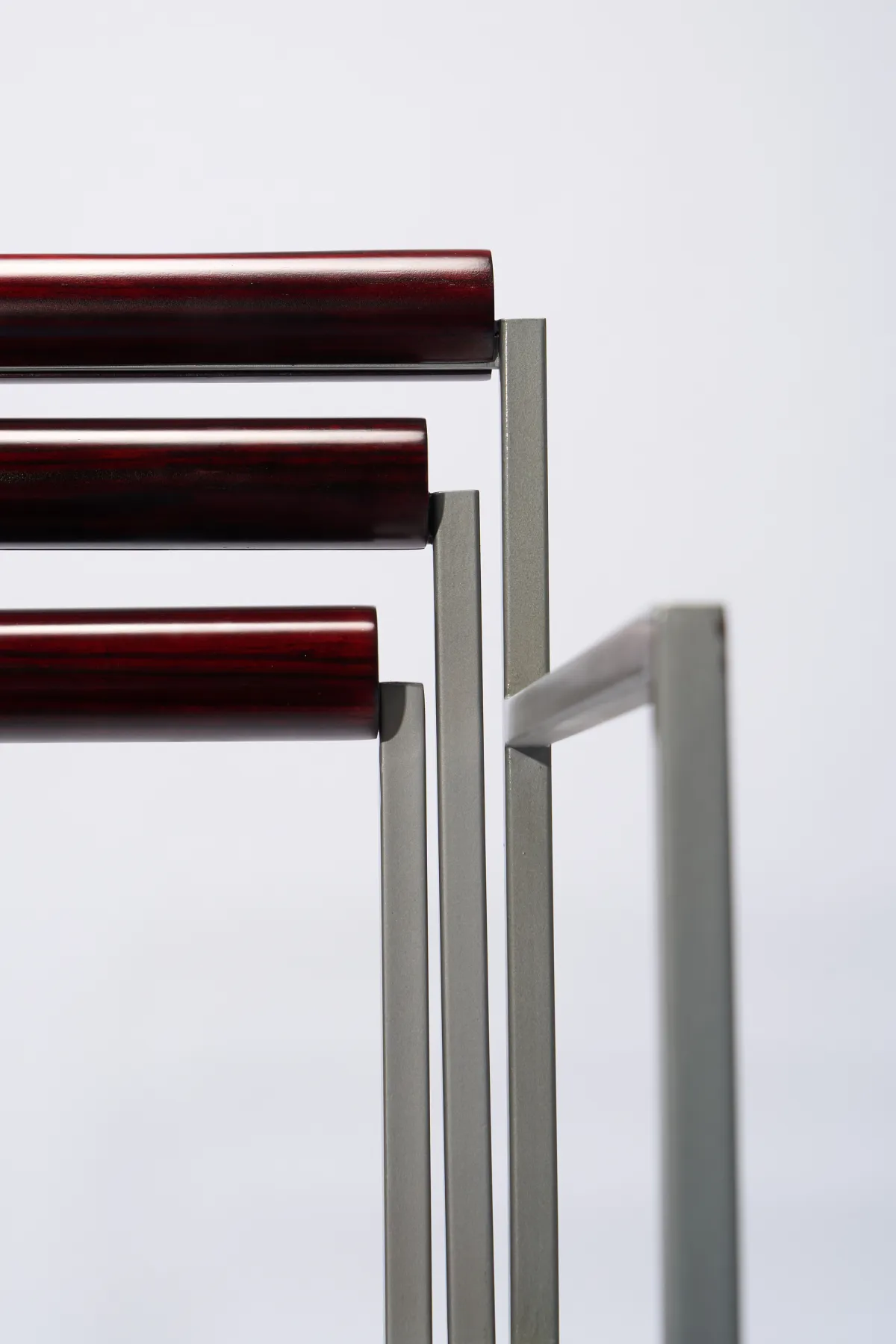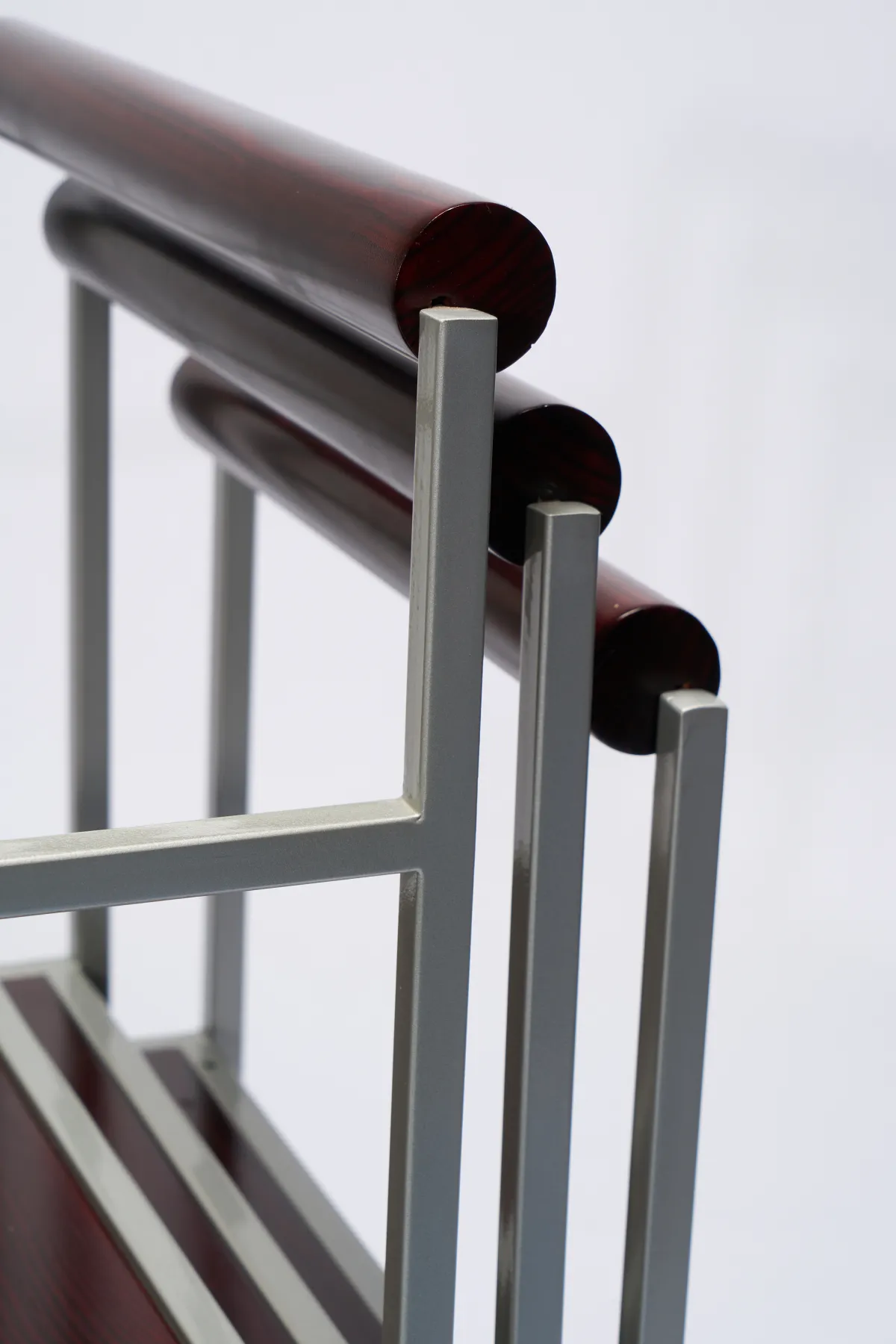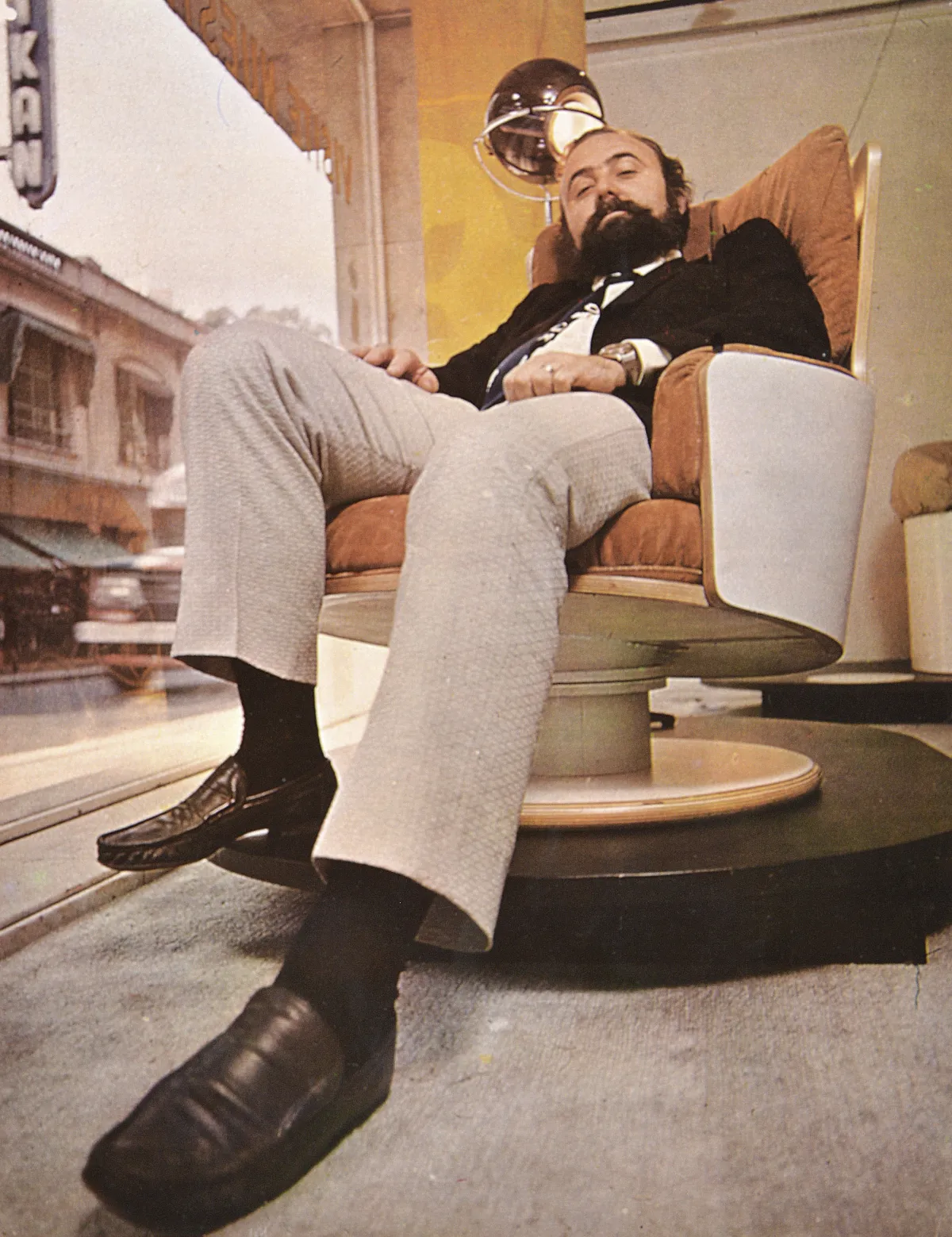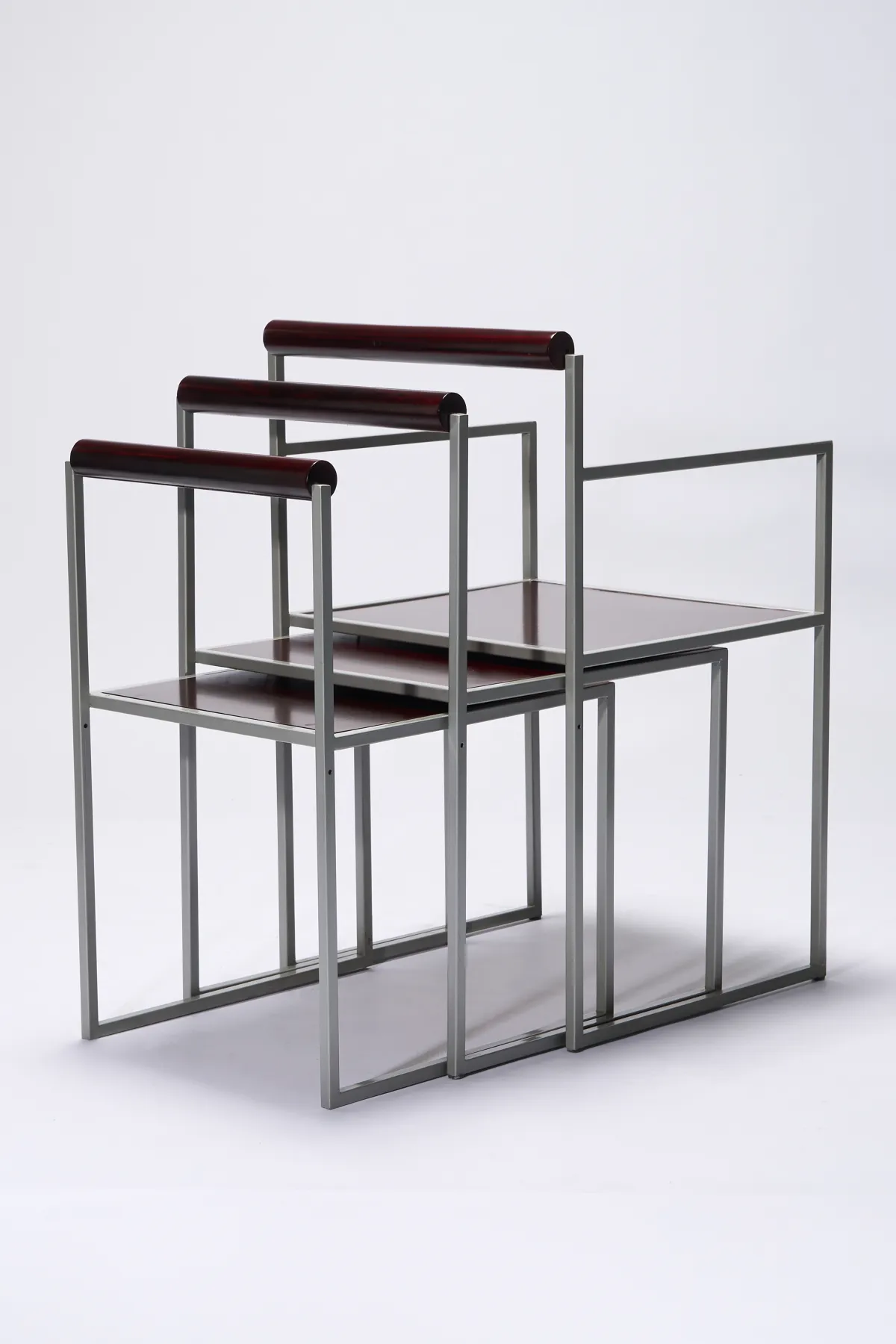
Trisilla
“3 in 1” stackable seating system. Its design allows the separation of the pieces even when in use. They were conceived with a minimal morphology and in different scales, giving priority to the reading of the system as a three-dimensional grid. Ricardo Blanco was one of the leading figures in furniture design whose specialization in seating led him to publish “Sillopatía” in 2003 and “Diseño de Mobiliario Argentino Actual”, among other investigations where he develops a construction method to arrive at unprecedented typologies. His pieces are part of design collections such as those of the MoMA in New York, the LACMA in Los Angeles and the Museum of Modern Art in Buenos Aires.
- Authorship — Ricardo Blanco
- Object Type — Chair
- Material and Technique — Laminated wood, solid wood and iron
- Measurements — Big chair: 50 x 50 x 82 Medium chair: 45 x 47 x 75 Small chair: 42 x 47 x 70 cm
- Origin — Argentina
- Dating — 2002
- Condition — Original
ID 240004

